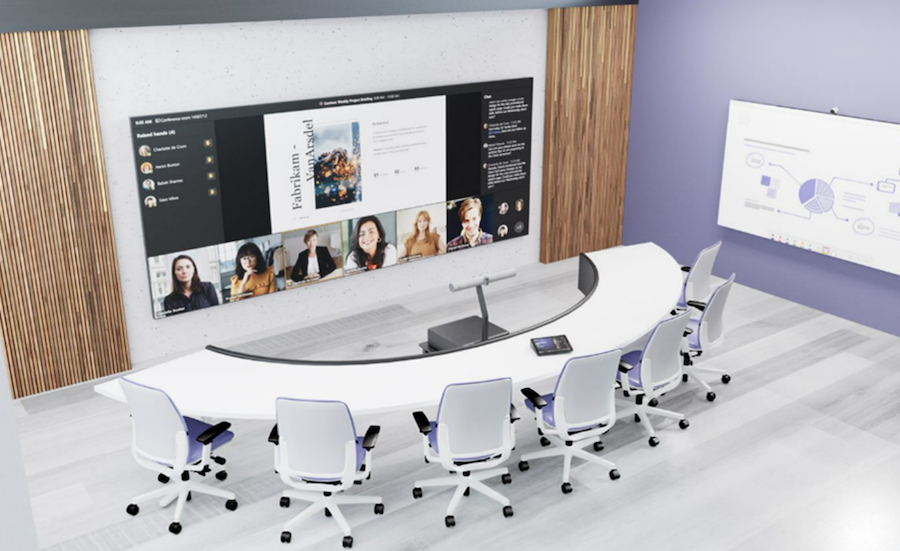Once You Have It, You Have to Manage It
A digital signage project has many parts. There's choosing the right hardware and software, deciding what content will be displayed, and ensuring that your signage system is properly maintained because a blank or malfunctioning screen presents a poor image for whatever purpose the digital signage intended.
When we are brought in to propose a digital signage project, one area we sometimes see that needs more attention is the management of the system. Who is going to keep the content up to date? What is the level of complexity in that content? Of course, there are several authoring and management tools to accomplish these tasks, but picking the right one, provisioning the team that will use it, and building the right processes around managing your system is not as easy as it might seem. If you're considering a digital signage project in Scottsdale (or, for that matter, anywhere), here are some critical things to consider.
on Tuesday, 27 December 2022.
Posted in Digital Signage – Scottsdale, AZ, Digital Signage
Hybrid Meetings Are Becoming More Intelligent Than Ever
Since their inception, hybrid meetings have been a head-scratcher for many businesses. How can a room full of people adequately speak to and see remote participants without leaving them out of the conversation?
The transition to hybrid meetings has been challenging, but solutions like Zoom Rooms simplify the experience for participants on both ends. Zoom Rooms systems work by integrating video conferencing hardware like cameras, displays, and controllers into the same Zoom platform.
And now, Zoom has unveiled three new features that will further improve the hybrid meeting experience. Here’s how Zoom Rooms are changing the way we collaborate and communicate, even across different languages.
on Monday, 19 December 2022.
Posted in Zoom Rooms, Scottsdale, AZ, Zoom Rooms
By now, many readers have heard about the emerging cyberthreats targeting critical infrastructure. Did you know the same cybercriminal tactics can be used to attack AV control systems? Typical cyber security policy is about IP networks, it does not address AV systems that use serial, contact closure, or other classic 4-wire AV control busses like AXlink or Cresnet. Learning the Tactics, Techniques, and Procedures (TTPs) of industrial control cyber attackers may help the AV industry see how vulnerable their classic AV control systems really are.
Oftentimes, a malicious actor may compromise enterprise IT networks and steal control system related information. Procurement documents, engineering specifications, and software configurations may be stored on corporate folders. In audiovisual terms, this could be signal flow diagrams showing the wiring, control system code, engineering libraries, templates.
on Monday, 19 December 2022.
Posted in Attack Vector
To celebrate survivors and support those impacted by ovarian cancer, this quarter we joined forces with the National Ovarian Cancer Coalition (NOCC). We first hosted a virtual event, bringing together our employees from all over the country, to play trivia, enjoy presentations from NOCC, and raise money. Next, we joined NOCC’s annual Together in Teal walk. This was the first walk the NOCC has put together since 2018 (due to Covid restrictions) and we were thrilled to be a part of such a wonderful event. The first ever NOCC walk was also in Arizona in 2010 and the event has continued to grow year after year!
on Thursday, 15 December 2022.
Posted in Philanthropy
3 Areas to Consider for Designing Collaborative Spaces for Hybrid Work
Companies across the U.S. and the world are looking at in-office, remote, and hybrid work models as well as technology to ensure an effective team environment, no matter where their employees are located. In recent posts, we’ve discussed technology like unified communication and collaboration solutions to the particulars of creating better meeting spaces for hybrid teams.
Aside from “standard” meeting rooms, collaboration spaces are a different breed of room for getting work done. While much collaboration happens in regular meeting rooms, small and large, many companies invest in purpose-built spaces to enhance ideation, creative thinking, developing new concepts, products, and services, and overcoming roadblocks in complex projects. The problem is: most of those spaces weren't designed for the hybrid work revolution. If you are grappling with how to create better collaboration spaces in your Scottsdale, AZ, company, please keep reading below for some ideas that can help.
on Monday, 12 December 2022.
Posted in Collaboration Space Scottsdale, AZ, Collaboration Space
Why Bringing UC to the Conference Room Is a Challenge (But Entirely Worth It)
We all want to make the workday simpler and less chaotic, don’t we? Yet, with too many communication tools, people become confused about when and how to use each.
That’s why unified communications solutions are so beneficial to modern companies. UC creates a seamless flow through all layers of communication, from chat to email to audio and video calls. With a consistent user interface on every device, people can confidently access everything they need, whether they’re at their desks, on their phones, or in the conference room.
But while it’s easy enough to access a unified communications platform on a single device like a laptop or desktop computer, it’s a whole other challenge to outfit UC on fifty or so devices in conference rooms. Why? We’ll explain the process below and how we can solve any issues.
on Monday, 05 December 2022.
Posted in Unified Communications Solutions Phoenix, AZ, Unified Communications Solutions
New Devices and Features Continue to Enhance Teams for Hybrid Work Models
In the post-pandemic workplace, companies have been facing new challenges to old work models. Whether companies go with mandatory "X days in the office" policy or a more liberal approach to in-office presence, the need to better support hybrid work models is evident. And most companies, in reality, are still muddling their way through this new world.
Fortunately, the companies that enable remote work with technology are paying attention and adapting the platforms to create more seamless collaboration models. Microsoft, of course, is a big player in every aspect of productivity and collaboration software. Its latest updates to its Teams platform have focused on bridging the divide between remote and in-office workers for more flexible and inclusive collaboration. Keep reading below to see how the latest Microsoft Teams Rooms enhancements can help your Tempe, AZ, company accommodate hybrid work.
on Friday, 02 December 2022.
Posted in Teams Rooms Tempe, AZ, Teams Rooms
Do you ever play Box of Chocolates: Netflix Edition? It’s where you just pick whatever show the algorithm picks for you... but you go in blind. You don’t look at the cast list, the description, the language, etc. It’s a risky game. Sometimes you get directed to Squid Game, and it’s a wild ride. Other times... if the young’uns forgot to change Netflix user accounts... you get Season 12 of Bluey, an Australian animated television series for preschoolers. You just don’t know what you’re going to get. It’s a young person’s game, though. This used to be fun, but now I just don’t have the time or the patience for it. I want to know what I’m getting into, what genre, who’s in it, and how many seasons. I want to know exactly what I’m getting before pressing that Play button.
on Wednesday, 30 November 2022.
Posted in Qualiverse
 Is Your Team Prepared for the Process of Managing Digital Signage?
Is Your Team Prepared for the Process of Managing Digital Signage? 







